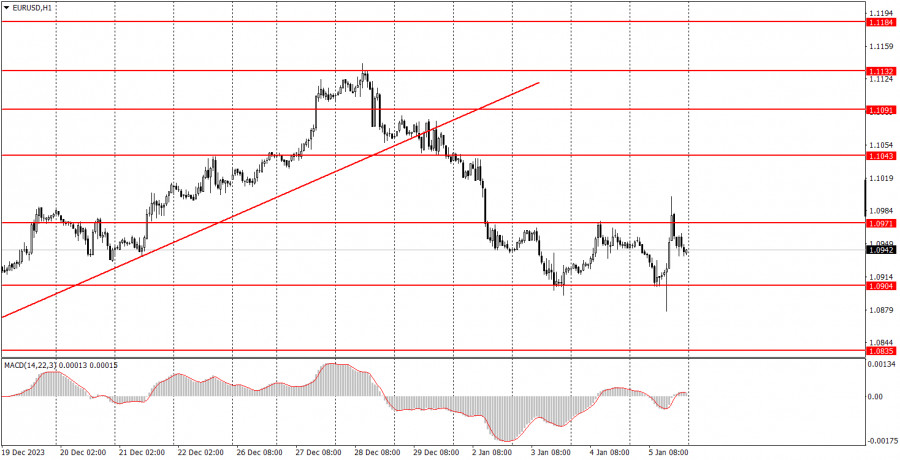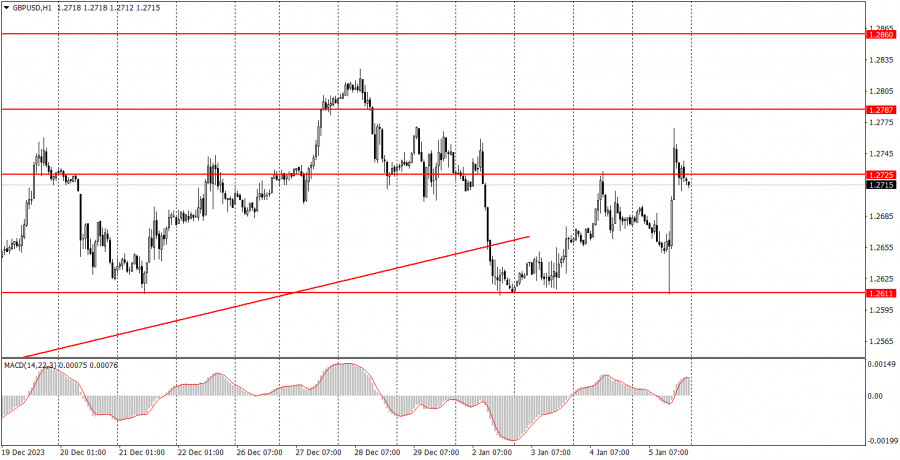

There are fewer macroeconomic events on Monday, and none of them are crucial. Essentially, only the euro area retail sales report will be published. The report is expected to show a negative value again, which is not surprising. Furthermore, it would not be surprising if this report does not exert any pressure on the euro. On Friday, we witnessed how even strong news that was supposed to work in favor of the dollar did not provide any support to it. The euro has undergone some correction in recent weeks, but this movement is still too weak to be considered a trend. As for the British pound, it has not really corrected at all. There are no interesting reports lined up in the UK and the US on Monday.
Analysis of fundamental events:
From Monday's fundamental events, only a speech by Federal Reserve representative Raphael Bostic stands out. Honestly, it is hard to imagine how he can provide support to the dollar. It is unlikely for the greenback to appreciate, even if Bostic announces fewer Fed interest rate cuts in 2024 than the market currently expects.
General conclusion:On Monday, we can highlight only one economic report, and it is of secondary importance. Therefore, we expect weak movements, low volatility, and a flat phase for both currency pairs. Perhaps market activity may gradually increase during the US trading session, but this does not guarantee that we will see a trend.
Basic rules of a trading system:1) Signal strength is determined by the time taken for its formation (either a bounce or level breach). A shorter formation time indicates a stronger signal.
2) If two or more trades around a certain level are initiated based on false signals, subsequent signals from that level should be disregarded.
3) In a flat market, any currency pair can produce multiple false signals or none at all. In any case, the flat trend is not the best condition for trading.
4) Trading activities are confined between the onset of the European session and mid-way through the U.S. session, after which all open trades should be manually closed.
5) On the 30-minute timeframe, trades based on MACD signals are only advisable amidst substantial volatility and an established trend, confirmed either by a trendline or trend channel.
6) If two levels lie closely together (ranging from 5 to 15 pips apart), they should be considered as a support or resistance zone.
How to read charts:Support and Resistance price levels can serve as targets when buying or selling. You can place Take Profit levels near them.
Red lines represent channels or trend lines, depicting the current market trend and indicating the preferable trading direction.
The MACD(14,22,3) indicator, encompassing both the histogram and signal line, acts as an auxiliary tool and can also be used as a signal source.
Significant speeches and reports (always noted in the news calendar) can profoundly influence the price dynamics. Hence, trading during their release calls for heightened caution. It may be reasonable to exit the market to prevent abrupt price reversals against the prevailing trend.
Beginners should always remember that not every trade will yield profit. Establishing a clear strategy coupled with sound money management is the cornerstone of sustained trading success.